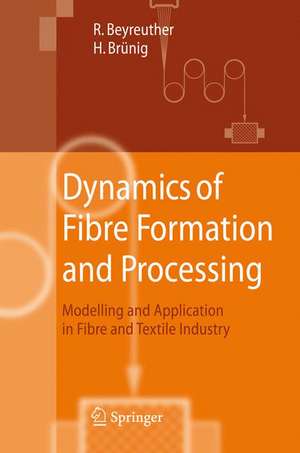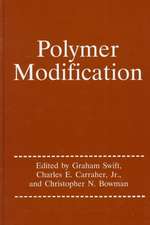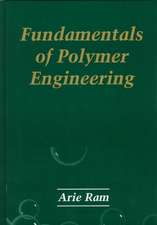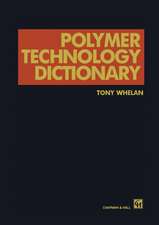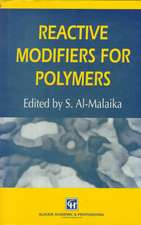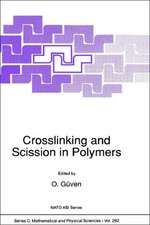Dynamics of Fibre Formation and Processing: Modelling and Application in Fibre and Textile Industry
Autor Roland Beyreuther, Harald Brünigen Limba Engleză Hardback – 13 noi 2006
| Toate formatele și edițiile | Preț | Express |
|---|---|---|
| Paperback (1) | 700.94 lei 6-8 săpt. | |
| Springer Berlin, Heidelberg – 14 oct 2010 | 700.94 lei 6-8 săpt. | |
| Hardback (1) | 953.65 lei 6-8 săpt. | |
| Springer Berlin, Heidelberg – 13 noi 2006 | 953.65 lei 6-8 săpt. |
Preț: 953.65 lei
Preț vechi: 1162.99 lei
-18% Nou
Puncte Express: 1430
Preț estimativ în valută:
182.51€ • 189.83$ • 150.67£
182.51€ • 189.83$ • 150.67£
Carte tipărită la comandă
Livrare economică 14-28 aprilie
Preluare comenzi: 021 569.72.76
Specificații
ISBN-13: 9783540462217
ISBN-10: 354046221X
Pagini: 380
Ilustrații: XIII, 365 p.
Dimensiuni: 155 x 235 x 26 mm
Greutate: 0.68 kg
Ediția:2007
Editura: Springer Berlin, Heidelberg
Colecția Springer
Locul publicării:Berlin, Heidelberg, Germany
ISBN-10: 354046221X
Pagini: 380
Ilustrații: XIII, 365 p.
Dimensiuni: 155 x 235 x 26 mm
Greutate: 0.68 kg
Ediția:2007
Editura: Springer Berlin, Heidelberg
Colecția Springer
Locul publicării:Berlin, Heidelberg, Germany
Public țintă
ResearchCuprins
Steady State and Non-Steady State Technological Processes.- Modelling of Steady State Fibre Formation Process in Melt Spinning.- Dynamics of Fibre Formation Processes.- Dynamics of Fibre Processing Processes.- Dynamics of the Tensile Force and its Importance for Process Stability.
Textul de pe ultima copertă
The book deals with the modelling of steady state and non-steady state basic processes of fibre formation and fibre processing. Focal points are melt spinning processes (polymers and glass, drawing, spunbonded nonwoven), spun yarn spinning processes (drafting, carding) and the description of the dynamics in different process steps during the fibre processing (fibre transport, fibre heating and cooling, false twist texturing). A special chapter deals with dynamics of tensile force (measuring and evaluation possibilities) and its importance for the process stability. All presented examples are based on industrial practice and give the reader a direct imagination of the discussed problems. The results are explained in a userfriendly way and give the practitioner the possibility to optimize his or her own processing. The book will be of special interest to researchers, and engineers, in the man-made fibre and textile industry as well as to teachers and students of the relevant graduated and undergraduated courses in textile engineering and polymer physics including the accessory mechanical engineering.
Caracteristici
A very practice-oriented book Gives an overview over the modelling and dynamics in typical fibre formation and fibre processing processes Includes supplementary material: sn.pub/extras
